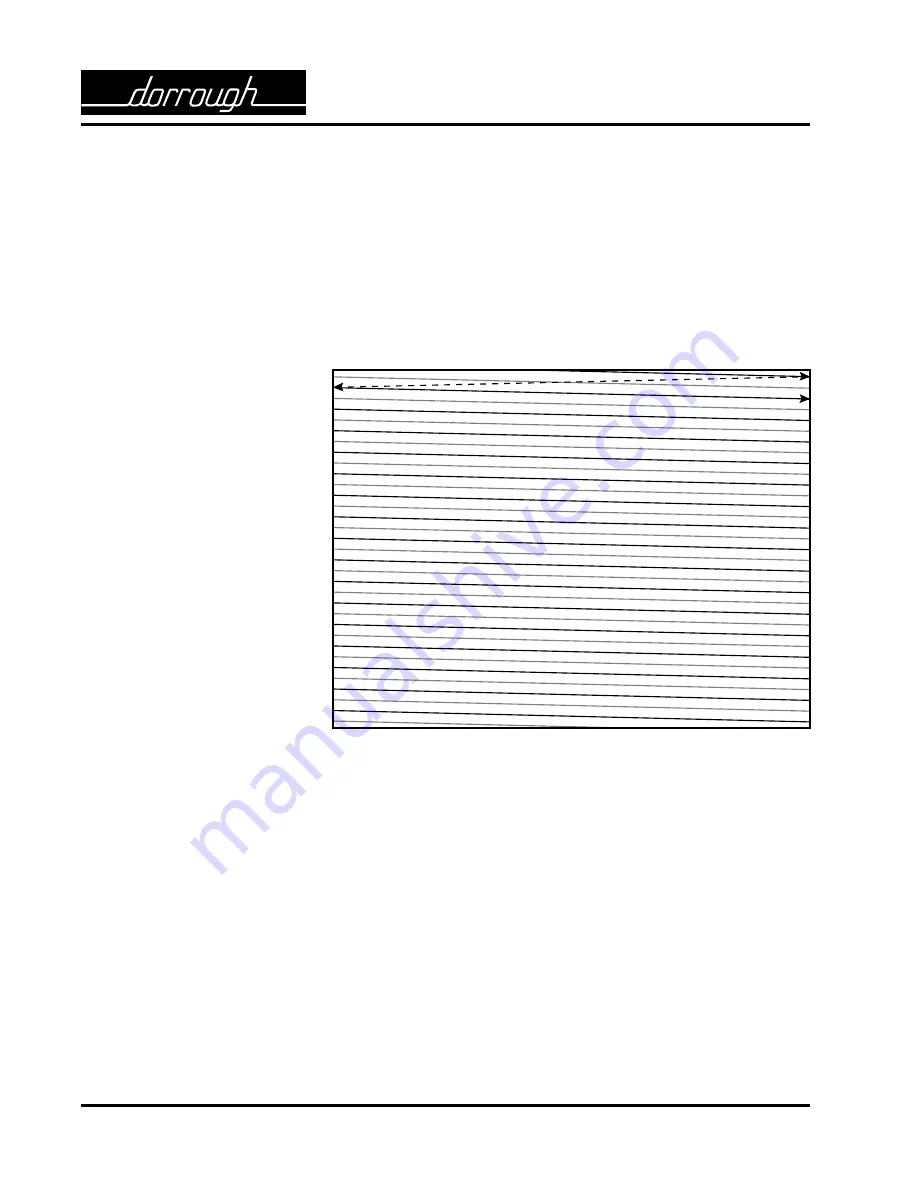
6 – NTSC Composite Video Signal
VLM-40 NTSC T
ECHNICAL
I
NSTRUCTION
M
ANUAL
OPERATION
C
OMPONENTS
O
F
T
HE
NTSC C
OMPOSITE
V
IDEO
S
IGNAL
...
Fig. 5. The NTSC Composite Video
signal contains two interlaced
fields of 262.5 lines, for a total of
525 horizontal scan lines.
In this section, you will learn how to interpret the readings on
your VLM-40. As a study aid, a corresponding waveform
monitor drawing accompanies each example illustration.
The NTSC Composite Video Signal is a complex analog signal
that contains luminance, color, and synchronizing signals.
When we watch a picture on a television set, we are actually
watching a variable-intensity electron beam tracing out a series
of pictures on the light sensitive portion of a picture tube, as
shown in Fig. 5.
The synchronization signals embedded in the television signal
precisely instruct the electron beam to move across and down
the picture tube to build a complete picture (using two fields)
in
1
⁄
30
of a second. As the process repeats, our eyes do not see
individual pictures or frames, but instead they blend the frames
together so we perceive a moving picture.
Examining a horizontal scan line in detail (as shown in Fig. 6
on the next page), we can see several important components of
the ideal NTSC Composite Video Signal. A single horizontal
scan line (1 H) has a duration of 63.5 µs. Horizontal sync is 4.7
µs long and extends from -40 to 0 IRE. Setup level for reference
black is at 7.5 IRE, which provides a margin of safety for sync
level. Peak white is at 100 IRE. Color burst is 2.5 µs long to
provide color synchronization, and extends from -20 to +20 IRE
on the front porch of the horizontal scan line.


































